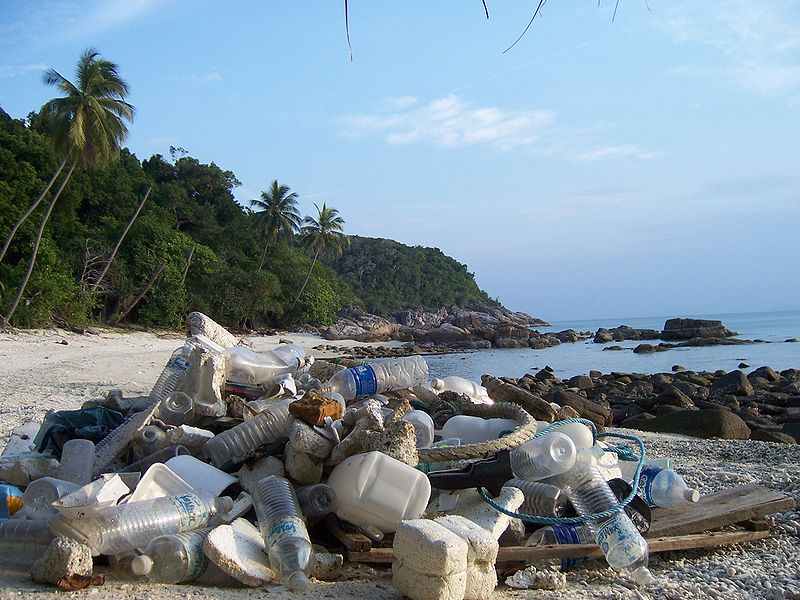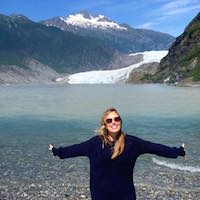
Consumption is the new black.
We all consume to survive, but many of us consume because heck, we can. The limitless choices available to us can make thoughtful purchases fall second place to instant gratification.
I was once the gal who considered 50 pairs of shoes in her closet “normal.” Granted, I lived in a city, where I could wear 14 pairs each week.
But what happened to all those shoes when I gave them away to move to a small island in the Pacific? Most of them went on to be re-used. But eventually, they went on to become part of an ever-increasing problem—landfill waste.
Like many people, I had no idea that my consumption would create a future problem. While owning all those shoes back in the 90s I was conscientious about other things like walking to the grocery store, the beauty salon, the beach, restaurants, and entertainment—instead of driving.
I recycled. I re-used. My lifestyle, that seemed alternative at the time, was about to be blown wide open due to the consequences of too much stuff.
Forget shoes. What happened to all those plastic toothbrushes that I had used in my life? And what about those disposable plastic lighters, mascara tubes, lip-gloss containers, shampoo bottles, and cheese wrappers? That was a question I wouldn’t know the answer to for some years.
Humans are the only animals who create and consume materials strictly for pleasure, while other creatures, like earthworms, consume to survive and give back to the world in the form of new soil. It would be silly to compare the life of a human to that of an earthworm, but what if we only used what we could give back in terms of energy?
I started to think about how I could give back for all that I was using. I spent the next year completely off the grid, and two more years with a household powered by solar energy. I rode my bike more, walked more, and consequently learned more about the plants and trees in my area because I wasn’t whizzing by them in my car.
I joined an environmental organization that does beach cleanups, tests water quality, protects beach access, and teaches the public about the importance of caring for the ocean and planet. For four years, we noticed a steady increase in trash washing up on the shores of Kauai island.
In 2011, a Japanese tsunami caused a massive loss of life, spillage of radioactive waste, and an estimated 25 million tons of debris dumped into the Pacific ocean.
I learned that this trash added to an already ongoing problem of garbage patches in the world’s oceans, and that the ocean sorts that trash according to weight and buoyancy.
It wasn’t long before hundreds of similar weighted items, like toothbrushes, landed on North Pacific islands and the west coast of North America.
I also learned that there is no state or countrywide preparedness plan in place for disasters of this magnitude. The National Oceanic and Atmospheric Administration (NOAA), under the United States Department of Commerce, has headed a Marine Debris program monitoring and assessing the data from the tsunami. But locally, it is up to volunteers to do the cleaning of the marine debris landing on the shore.
Most people have no idea of the impact of the marine debris, including our single-use plastics and abandoned nets in the ocean.
Through volunteering, I learned about native sea birds ingesting plastics that look like food floating on the ocean. These plastics get stuck in their digestive tracts, causing painful death. I learned about sea life, from coral to whales, ingesting plastics and suffering and dying from human garbage floating in the ocean.
The most moving repercussion of marine debris I have seen was a six-pack plastic ring deeply cutting into the neck of a growing sea turtle. I can’t remember how many times in my life I bought a six-pack of root beer and did not consider what happened to the plastic after I threw it away.
Many whales are currently dragging abandoned fishing nets. These weigh them down considerably, making their existence a struggle.
North Pacific whales leave their cold water feeding grounds and head to Hawaii each year to mate and give birth in warmer waters. I know of one whale entanglement sighting this year off of our coast. Fortunately, experts working with the coast guard cut off the nets. This was a whale that was spotted—what about the whales that are not?
I was taught to throw my trash “away,” but “away” is just another word for landfill. If we use plastic bags and plastic bottles, we can be assured they are winding up in the ocean.
There is an upside to marine debris. We now know it exists, we know its harmful effects, and we know we are the problem. With this awareness, we have the power to change course immediately.
In 2009, the Surfrider Foundation Kauai Chapter convinced the local county council and mayor that a plastic bag ban was essential for preserving a healthy ecosystem. The council agreed and in 2011 Kauai County became plastic bag-free. County councils all over the state of Hawaii eventually agreed and created county-wide bans of single-use plastic bags in grocery stores that effectively made the entire state plastic bag free.
Banning plastic bags was an immediate response to the problem of them winding up in the ocean. But what about the rest of the marine debris? What about the twenty million tons from the Japan disaster alone? When I am asked what we can do, my response is always the same, “Stop using plastic as much as possible.”
It’s a matter of changing habits. That is how we change the world—by changing our habits, by refusing to use single- use plastics, styrofoam to-go containers, and finding alternatives to our plastic habits.
Although I don’t have the answer to the enormous marine debris problem, I am encouraged by the tenacity of volunteers cleaning up the debris landing on our shores weekly.
In 2016, 1,952 volunteers removed 80,059 lbs of trash, nets, tires, boats, buoys, plastic, propane tanks, oyster spacers, and hagfish traps from the shores of Kauai. In the first three months of 2017, more than 26,477 lbs of marine debris has been removed from the coastline by volunteers. Combined, that is over 106,000 lbs of marine debris that is no longer a threat to sea-life.
The marine debris collected is sorted and some of it is burned for energy on the island of O’ahu. Some is sent to companies like Method, Adidas, Parley, and Byfusion in New Zealand, who are reusing marine debris. Still more trash goes to the landfill.
This is the best we can do for now. We will do better when we know better.
Here is a list of what we can do to lend a hand to the marine life in our oceans:
1. Say “no” to disposable culture. Start with no disposable cups and lids (unless they are biodegradable). For many years, the gals at my local coffee shop knew me by my red ceramic mug. It shattered one day, so I replaced it with a mug that says “Good Morning Beautiful” on it. Talk about a conversation piece!
2. Say “yes” to re-usable grocery bags. I’ve got a collection in my car and at home. Not only do they reduce plastic bags from getting into the ocean and trees becoming disposable paper bags, stores often offer a discount at the checkout counter for bringing them.
3. When planning a vacation, look for volunteer opportunities to give back to host culture. We have many organisations in Hawaii that have weekly events to kokua (take care of) the island. It is a great way to make connections, have fun, and return some energy to our source.
Nā po‘e ka lani, nā po‘e moana, nā po‘e ka hōnua—the people of the heavens, the people of the ocean, and the people of the land, we’re all just one big family in how we work together in preserving everything.” ~ Kimokeo Kapahulehua (Hawaiian Islands Humpback Whale National Marine Sanctuary volunteer)
~
~
Author: Lori Stitt
Image: Wikimedia Commons
Editor: Lieselle Davidson






Read 12 comments and reply